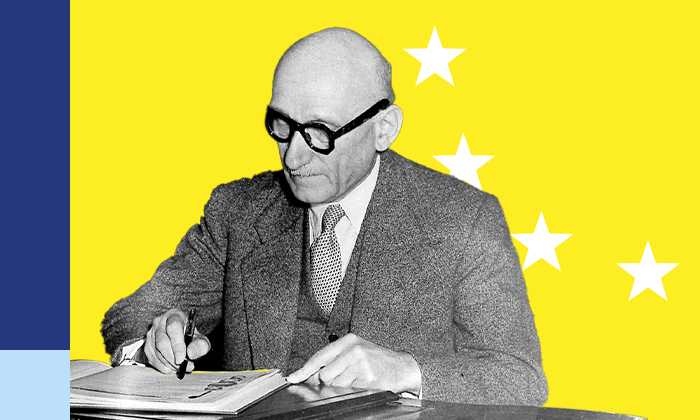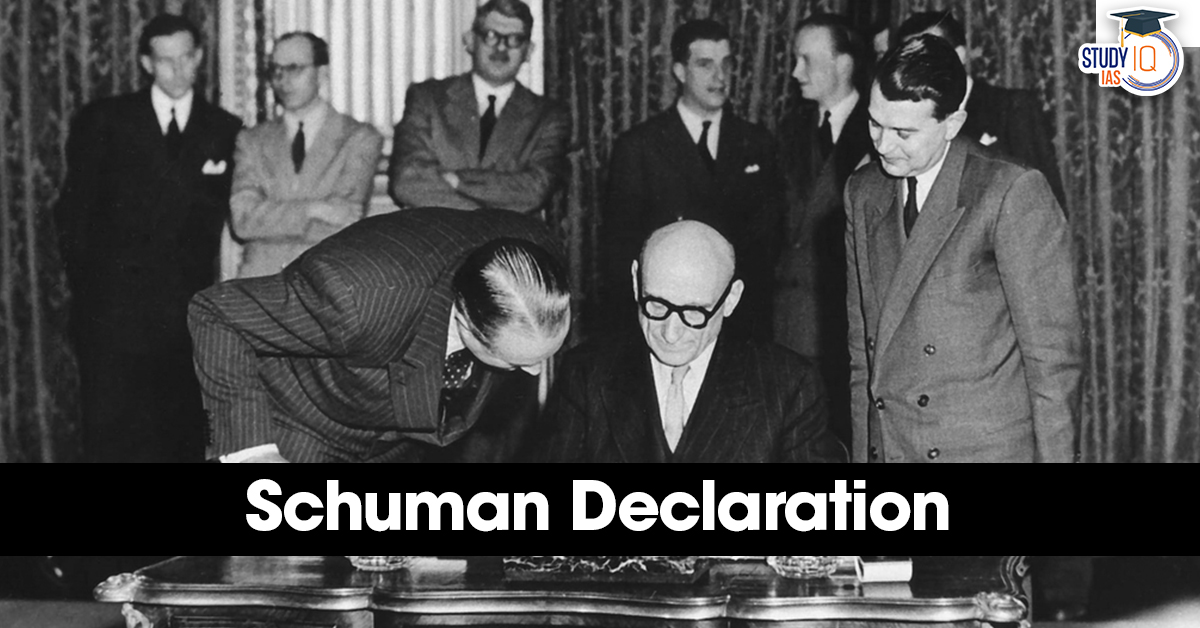Table of Contents
On 9 May 2025, the European Union (EU) celebrated the 75th anniversary of the Schuman Declaration, a landmark event in modern European history that laid the foundation for peace, unity, and cooperation in post-war Europe. The declaration, announced by French Foreign Minister Robert Schuman in 1950, was a visionary proposal that ultimately led to the creation of the European Union as we know it today.
What is the Schuman Declaration?
The Schuman Declaration was delivered on 9 May 1950 at a press conference in Paris. Robert Schuman proposed that Franco-German coal and steel production—the industries most critical for warfare—be placed under a single, supranational authority. This revolutionary idea aimed to make future wars between European nations “not merely unthinkable, but materially impossible.”

Key Features of the Schuman Declaration
| Aspect | Explanation |
|---|---|
| Historical Context | France and Germany had fought three major wars within 75 years, culminating in two devastating World Wars. |
| Core Problem | Competition over key resources like coal and steel fueled militarization and conflict between the two nations. |
| Economic Integration Concept | By pooling coal and steel production under a shared authority, the two countries would be economically interdependent. |
| Mechanism of Peace | Shared control of essential war-making industries would make it impossible for one country to secretly build arms for war against the other. |
| Political Cooperation | Integration fostered trust and collaboration, reducing historical animosity and encouraging diplomatic dialogue. |
| Long-term Vision | Economic cooperation was seen as the foundation for broader political unity and peace in Europe. |
| Resulting Institutions | Led to the creation of the European Coal and Steel Community (ECSC) in 1951, the first supranational European organization. |
| Impact on Future Wars | The economic ties created by the ECSC made war between France and Germany materially impossible, significantly contributing to decades of peace. |
| Symbolism | Demonstrated that war prevention was possible through innovative integration and mutual dependency. |
Impact and Legacy: The Birth of European Integration
The Schuman Declaration directly led to the creation of the European Coal and Steel Community (ECSC) in 1951, which was the first step towards the European Union.
European Coal and Steel Community (ECSC) – 1951
-
Created to manage shared coal and steel industries.
-
Represented the first supranational European institution.
-
Laid the groundwork for deeper economic and political union.
Founding Members of ECSC:
-
France
-
West Germany
-
Italy
-
Belgium
-
Netherlands
-
Luxembourg
Why is the Schuman Declaration Important?
Peace Building:
After two world wars, the declaration was a radical approach to maintain peace through economic dependency.
European Unity:
It fostered trust, collaboration, and set the stage for broader integration.
Institutional Foundation:
It led to the formation of EU institutions like the European Parliament, European Commission, and eventually the Eurozone.
Democratic Values:
Promoted transparency, shared governance, and supranational decision-making in Europe.
75th Anniversary Celebrations – 2025
In 2025, the EU marked Europe Day and the 75th Anniversary of the Schuman Declaration with a series of events across member states. Celebrations included:
-
Historical exhibitions in Brussels, Paris, and Berlin.
-
Educational programs highlighting European integration.
-
Speeches by EU leaders emphasizing peace and unity.
-
Launch of a special commemorative coin and postal stamps.
-
Debates on the future of the EU amid global challenges.
Schuman Declaration in Today’s Context
In today’s geopolitical climate, the principles of the Schuman Declaration are more relevant than ever. Amid challenges such as:
-
War in Ukraine
-
Climate change
-
Economic disruptions
-
Migration crisis
-
Rise of populism and nationalism
The vision of a united, peaceful, and cooperative Europe serves as a guiding light for policymakers and citizens alike.
Conclusion
The 75th Anniversary of the Schuman Declaration is a powerful reminder of how visionary leadership and regional cooperation can transform a war-torn continent into a model of peace and prosperity. As Europe confronts new challenges in the 21st century, the legacy of Robert Schuman’s 1950 proposal continues to inspire efforts for greater unity, democracy, and resilience across the EU.


 World Summit on Disaster Management (WSD...
World Summit on Disaster Management (WSD...
 Domestic Systemically Important Banks (D...
Domestic Systemically Important Banks (D...
 The Missing Link in India’s Critical M...
The Missing Link in India’s Critical M...

























